At Greenbelt Alliance, we envision a Bay Area of healthy, thriving, resilient communities made of lands and people that are safe during climate disasters and recover quickly from wildfire, floods, and drought, where everyone is living with nature in new and powerful ways for generations to come.
We invite you to review our new Strategic Plan for 2021-2023, which outlines our core programmatic work along with key projects required to achieve our vision. The time for climate action is now! This is our plan to make an impact. We hope you will join us.
OVER GREENBELT ALLIANCE’S 60- YEAR HISTORY, WE HAVE STEWARDED THIS REGION’S BEAUTIFUL NATURAL LANDSCAPES WHILE PROMOTING THE GROWTH NEEDED FOR THRIVING COMMUNITIES.
As a result, today, almost 3.3 million acres of the Bay Area’s nine counties are protected open spaces.
Now, the Bay Area’s people, cities, and lands need critical help as our climate dramatically changes. Planning for the future must take into account the increases in major wildfires, extreme flooding, and prolonged drought already happening today that disproportionately affect our low-income and communities of color. This region’s housing availability and affordability crisis must be solved through new models of development that create sustainable communities with cleaner air, shorter commutes, and safer futures under a changing climate.
Climate change magnifies our differences in income, race, immigration status, zip code, local investments, and more that impact an individual’s ability to cope with and recover from climate disasters.
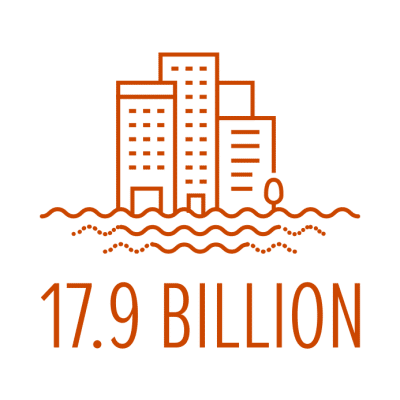
dollar value of residential and commercial buildings will be threatened by sea-level rise in California by 2050.
WE EDUCATE, ADVOCATE, AND COLLABORATE TO ENSURE THE BAY AREA’S LANDS AND COMMUNITIES ARE RESILIENT TO A CHANGING CLIMATE.
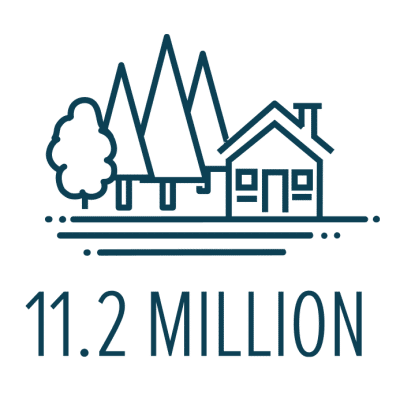
people in California currently live in the Wildland Urban Interface (WUI)—the area where houses and wildland vegetation meet or intermingle, and where wildfire problems are most pronounced.
We are focusing on ensuring our most vulnerable communities are centered in regional and local efforts to build climate resilience.
Greenbelt Alliance is leveraging our expertise in land-use policy advocacy and regional collaboration to realize a climate-resilient Bay Area. To us, this looks like communities and people thriving in the places they live, work, and play. Staying safe during climate disasters. Connecting with open spaces in new and powerful ways. Suffering less and recovering quickly after the next wildfire, flood, or drought. All thanks to equitable solutions drawing on the powerful role of nature.
The path toward this future is complex and more urgent than ever. At Greenbelt Alliance, we focus on data-driven and innovative policy solutions fostering much-needed regional collaboration to plan and invest in resilient communities.
WHY OUR WORK MATTERS
These realities are also opportunities for Greenbelt Alliance to help our threatened communities and landscapes.
The Challenge
The Solution
The Challenge
The Solution
The Challenge
The Solution
OUR PROGRAMS
Our Roadmap for Healthy, Thriving, Resilient Communities
To deliver on our vision for a resilient Bay Area, we are prioritizing our efforts in three new program areas to impact the local and regional land-use decisions with a climate resilience lens and create the places and landscapes we all deserve to enjoy now and well into the future.
Climate Risk Research
Climate Data that Drives Policy Decisions
GOAL
Conservation decisions are prioritized based on data-driven multi-climate hazard risks.
OBJECTIVE
Produce original research that will guide local and regional conservation and land-use advocacy for policies that incorporate climate risks and adaptation measures while avoiding development in high-risk areas.
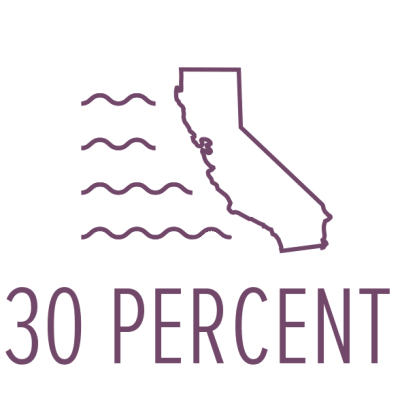
of California’s land and coastal waters are to be protected by 2030. The state’s vast network of natural and working lands can serve as nature-based solutions to climate change.
STRATEGIES
Educate
Advocate
Collaborate
more carbon per hectare is sequestered by tidal marshes than tropical forests. But with 90 percent of the Bay’s original wetlands lost to human activity, the hope for this “blue carbon” now rests on more protection and restoration.
Climate Risk Research: Key Projects
1. AT CLIMATE RISK: BAY AREA RESILIENCE HOTSPOTS RESEARCH & ANALYSIS
As the Bay Area grapples with how to handle multiple climate risks, Greenbelt Alliance is delivering the cutting-edge research to incorporate these threats into policy decisions. We are analyzing the Bay Area’s highest climate risk areas, as well as places that provide the most climate resilience benefits. These are the Bay Area’s “resilience hotspots”. We are highlighting these resilience hotspots because, if protected, they will substantially increase the region’s nature-based climate resiliency while contributing to public health and safety, providing critical habitat and connectivity, offering park and recreation opportunities, and yielding carbon sequestration benefits.
2. RESILIENCE HOTSPOTS OUTREACH
Raising awareness of climate resilience and the powerful role that nature can play in preparing communities for climate impacts is essential to influence climate action. Building from the Bay Area’s Resilience Hotspots research and analysis, Greenbelt Alliance is hosting a series of workshops and experiential learning opportunities to deepen our collective understanding of the Bay Area’s resilience hotspots and the actions needed to protect these critical areas. Bringing people closer to nature and educating them about our climate risks and resilience opportunities will bolster our region’s ability to advocate for equitable conservation and land-use policy solutions that prioritize areas of greatest resilience benefits.
The Bay Area is grappling with how to prioritize action addressing multiple climate risks. Decision makers are missing critical information on the risks communities and lands face from multiple climate hazards as well as nature-based opportunities that will reduce these risks.
Accelerating Climate Resilience
Forwarding Policies That Build Climate Resilience Now
GOAL
The Bay Area accelerates adapting to climate impacts and reducing vulnerability to wildfire, flooding, and drought through land-use decisions.
OBJECTIVE
Develop planning guidance, innovative policy strategies, and key partnerships that will bolster capacity and support local and regional efforts to implement equitable, climate-resilient land-use decisions.
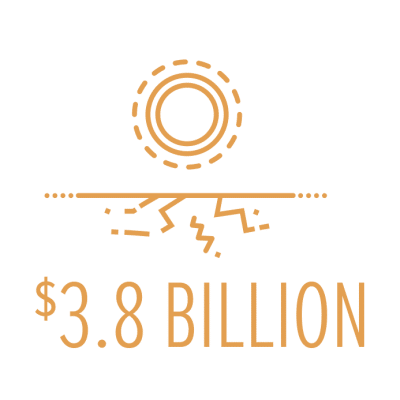
is the total amount of direct statewide economic losses to agriculture from the drought in California between 2014 and 2016.
STRATEGIES
Educate
Advocate
Collaborate
homes in California are in Fire Hazard Severity Zones—areas of significant fire hazards based on fuels, terrain, weather, and other relevant factors—that are potentially at risk from wildfire.
Accelerating Climate Resilience: Key Projects
1. GREENBELTS AND WILDFIRE RESEARCH
The natural environment around us can play a role as nature-based solutions to climate risks, including wildfire, flooding, drought and heat. Greenbelt Alliance is documenting the role that different types of open spaces (or greenbelts) can play in stopping the spread of wildfire and building community resilience so that we learn from the past and work to protect these critical lands in the future. We are conducting original research and formulating policy recommendations—highlighting specific case studies from California and the Western United States—to examine how greenbelts can be helpful policy tools in wildfire resiliency.
2. RESILIENCE PLAYBOOK
In order to accelerate the climate actions taken by local and regional governments across the Bay Area, Greenbelt Alliance is developing policy guidance and innovative strategies to bolster government leadership in order to implement equitable, climate-resilient land-use decisions that center nature-based solutions. We are creating a “Resilience Playbook” with easy-to-use guidelines documenting climate-resilience land-use policies and template language to build capacity for cities and counties in their local planning. By providing tangible guidance, tools, and cutting-edge solutions to communities to sharpen their level of readiness to face climate risks, we are educating, advocating, and collaborating on the most urgent climate action needed now.
3. INNOVATION IN WILDFIRE POLICY
Solving a problem as complex as the wildfires impacting the Bay Area requires innovative and collaborative solutions. At Greenbelt Alliance, we are prioritizing nature-based solutions to build our resilience to wildfire. To unlock these solutions at scale, we are conducting policy analysis on best practices and cutting-edge, market-based approaches for bold policies, mechanisms, and incentives that would direct development patterns away from high fire-risk areas and support open space conservation. Examples include transfer of development rights programs or regional buyouts of property repeatedly damaged by wildfire.
4. REGIONAL WILDFIRE COLLABORATION
We are connecting with stakeholders across the region to discuss coordinated plans as well as the lessons we have learned so that we can leverage these findings when addressing Bay Area wildfire planning and resilience. Through accelerating regional dialogue and cross-sector, cross-jurisdictional collaboration, Greenbelt Alliance is supporting critical efforts to heighten coordinated planning, investment, and implementation to mitigate risk and build our region’s resilience to wildfires. We are exploring unique partnerships and identifying areas to align initiatives that inform future funding proposals and state policy advocacy.
Communities and lands must be “resilient” and better able to respond, adapt, and recover from climate impacts. Our region is missing innovative ideas and partnerships that build climate resilience—guiding decisions on how we use our precious lands while determining the best way to grow our cities.
Climate SMART Development
Creating Sustainable, Mixed, Affordable, Resilient, Transit-Oriented Communities
GOAL
Communities across the Bay Area reduce emissions and build resilience through climate SMART development.
OBJECTIVE
Promote equitable, climate resilience through Sustainable, Mixed, Affordable, Resilient, Transit-Oriented development within existing urban and suburban areas.
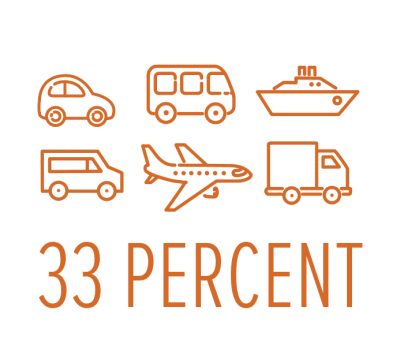
of the Bay Area’s GHG emissions are from transportation. Infill housing built in urban areas, near transit, jobs, and services can reduce greenhouse gas emissions.7
STRATEGIES
Educate
Advocate
Collaborate
homes have been built from developments that Greenbelt Alliance has endorsed since the 1980s.
Climate SMART Development: Key Projects
1. CLIMATE SMART DEVELOPMENT ENDORSEMENT PROGRAM
Since the 1980s, Greenbelt Alliance has been actively promoting specific development projects and neighborhood plans through our Development Endorsement Program to show our support for development that creates resilient communities in balance with nature for current and future residents. Endorsing thousands of new homes in walkable neighborhoods and along transit corridors, our goal is to encourage more climate SMART development in order to reduce greenhouse gas emissions and increase our resilience to climate-related risks of flooding, wildfire, and drought.
2. CLIMATE SMART ADVOCACY
By advocating for climate SMART development in local and regional planning processes, Greenbelt Alliance is supporting thriving, resilient neighborhoods with ready access to transit and housing choices for everyone. In doing so, we continue to protect the Bay Area greenbelt from sprawl development for generations to come. We are taking action at the local, regional, and state levels to impact policy and advocate for climate SMART decisions that shape the future of the Bay Area. With our extensive network of partners and grassroots community organizations, we collaborate to bolster equitable civic engagement in regional planning efforts to ensure a diversity of voices are actively participating in the dialogue.
The time is now to boldly address the climate crisis. Local and regional planning, policy making, and advocacy efforts are missing meaningful civic involvement that accelerates bold action to foster community resilience, equity, and climate justice outcomes.
ROADMAP TO RESILIENCE TIMELINE
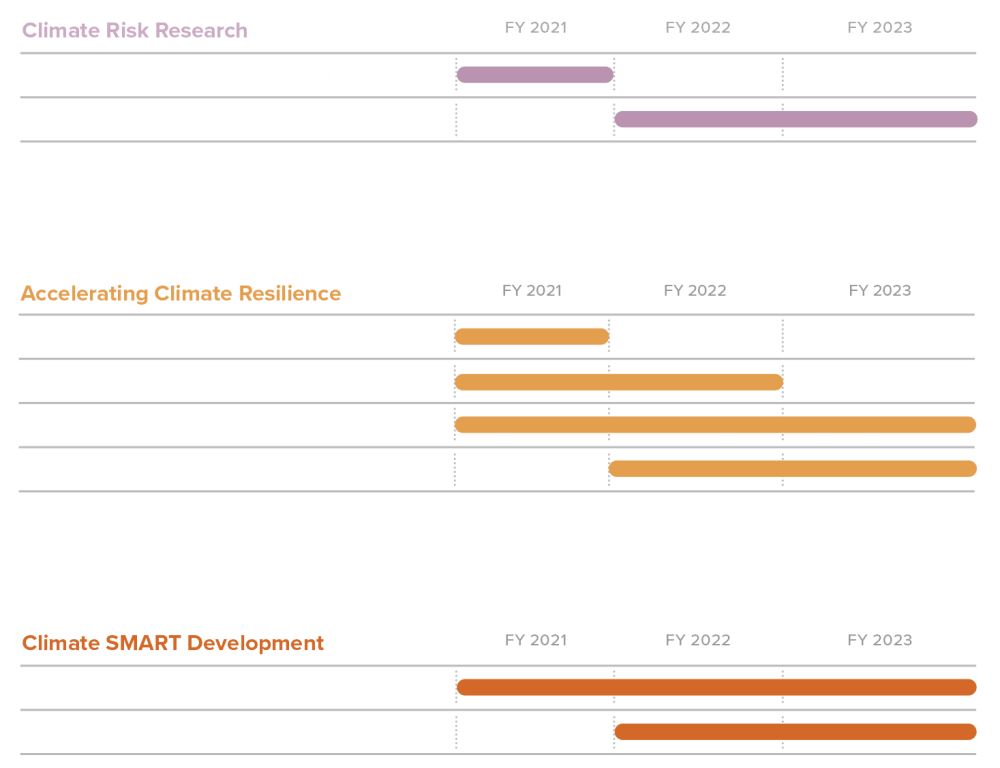
OUR IMPACT
We acknowledge that the road ahead is challenging, which is why we find our source of motivation and inspiration to drive change through the tangible impacts of our work.
Greenbelt Alliance is setting forth this new body of work in order to shift the perceptions and actions of leaders across government, communities, and businesses to protect and prioritize people and lands in the face of the climate crisis.
With every forward-looking policy decision, every inclusive planning process and resulting documents pointing to new solutions that prepare the Bay Area for wildfires, floods, and droughts, we succeed. With every additional acre of natural and working land restored to reap climate-resilience benefits, we succeed.
With every new development we endorse that cities approve to build the communities of the future, we succeed.
We will measure the impact and effectiveness of our programs over time using different metrics and tangible outcomes. What remains constant will be our commitment to realizing change in local and regional actions that foster heightened resilience of our communities and landscapes.

metric tons of CO2e (carbon dioxide equivalent) needs to be sequestered annually by 2030 through climate-friendly restoration practices on natural lands.
OUR VALUES
Just as Greenbelt Alliance works to create a better Bay Area, we also strive to better ourselves as an organization. To guide that continued improvement, our staff and Board of Directors have identified and adopted the following values. They reflect who we are as an organization, what we foster in our team members, and the internal standard we use to measure our work.
GROW TOGETHER
BE BOLD
COMMUNICATE WITH DEPTH & POSITIVITY
PRACTICE COMPASSION
TAKE RESPONSIBILITY
MAINTAIN TRANSPARENCY
ADVANCE JUSTICE, EQUITY, DIVERSITY, & INCLUSION
HAVE FUN
WE BELIEVE
There is a groundswell of support, interest, and desire to take action on climate change.
We cannot advance any agenda on climate resilience without advancing racial and social justice.
Our local leaders will uphold their values for public service and will make a difference by integrating climate resilience into every decision.
No one organization, community, or individual can tackle these complex challenges alone.
The Bay Area can be resilient to climate change, equitable to all people, and affordable no matter your income level.
The Bay Area will be a resilient place to live, where people will want to come to work and enjoy beautiful clean blue skies, abundant clean water, rolling hills, and diverse communities of people who are proud to call this region home.
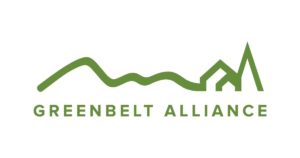
Learn more about our staff and Board of Directors who are dedicated to achieving the goals set forth in this Strategic Plan.
Thank you to Gabriel Kaprielian, Consultant, who created the Climate SMART Development framework.
Photos by Shira Bezalel
